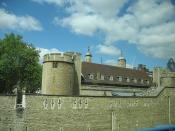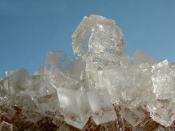Nature produces many things such as plants, animals and minerals. Everything that nature forms seems to have some a fairly symmetric pattern. Miners are almost perfect, for example the snow flake. It has six sides and they are almost exact mirror images of each other. Crystals also often are very symmetrical. Plants and animals are symmetrical to a certain extent. An animals body, if cut down the middle generally mirrors the other side, not perfectly of course. Minerals are more geometric than plants and animals, with straight planes and lines rather than the curves often visible in plants and animals.
Salt is considered a mineral but has a few very different characteristics. Salt, unlike other minerals, has a taste. Usually a very drying and sour taste. If you were to lick a crystal no taste would be given off. Salt is also soluble. If you leave a salt crystal in water for a couple of hours it completely dissolves.
No other crystalline minerals dissolve in water like salt does.
As discussed briefly in the comparison between minerals, plants and animals we established that all are fairly symmetrical. We learned a bit today about how to determine in how many ways an object is symmetrical. If you could cut the object in two and hold a mirror against one side and looking into the mirror the shape looked the same as before it was cut it is symmetrical. If the angles are different in any way it is not symmetrical. We also figured out how to count the face axis of different shapes. A square with four equal sides has a four face axis. A rectangle with two equal sides has a two face axis and so on.
Halite is the mineral name for table salt. Table salt is what...


